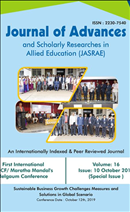Rosenthal’s Pygmalion Effect: An Historical Overview
The Impact of Expectations on Student Achievement: The Pygmalion Effect in Education
Keywords:
education, learning, knowledge, skills, values, morals, belief, habits, UNESCO, lifelong learning, formal education system, vocational learning, social cohesion, personal growth, Pygmalion effect, expectations, performance, Cooly's looking glass self, four-factor theory, Positive Climate, Positive Feedback, Input and Output, achievement, motivationAbstract
Education is the process of facilitating learning, or the acquisition of knowledge, skills, values, morals, belief and habits. The conceptual framework developed by UNESCO's International Commission on Education. Its report identifies four pillars of lifelong learning “learning to know” (the formal education system), learning to do(vocational learning), learning to live together(learning for social cohesion) and learning to be(learning as personal growth). In the classroom to make effective learning teachers use many approaches, techniques and strategies. A new strategy, the Pygmalion effect was used in the late 70es by the Rosenthal. The Pygmalion effect is where an individual’s performance is influenced by others’ expectations. It means if expectation is high then the performance is also high while if expectation is low then performance is also low. According to Cooly's looking glass self, it was clear that a person looks at oneself by the others eyes. Rosenthal continuously worked on the Pygmalion effect, in 1973 he gave a four-factor theory that shows how the Pygmalion effect works. This is a cyclic process in which four factors Positive Climate, Positive Feedback, Input and Output. In the beginning of the cycle the teacher shows high expectation in non-verbal way (input factor) and after all intervention (other three factors) the last results are high achievement and motivation of the students, therefore this result of expectation (high motivation and achievement) is called the Pygmalion effect.Published
2019-10-01
How to Cite
[1]
“Rosenthal’s Pygmalion Effect: An Historical Overview: The Impact of Expectations on Student Achievement: The Pygmalion Effect in Education”, JASRAE, vol. 16, no. 10, pp. 150–153, Oct. 2019, Accessed: Jul. 05, 2024. [Online]. Available: https://ignited.in/jasrae/article/view/12531
Issue
Section
Articles
How to Cite
[1]
“Rosenthal’s Pygmalion Effect: An Historical Overview: The Impact of Expectations on Student Achievement: The Pygmalion Effect in Education”, JASRAE, vol. 16, no. 10, pp. 150–153, Oct. 2019, Accessed: Jul. 05, 2024. [Online]. Available: https://ignited.in/jasrae/article/view/12531








